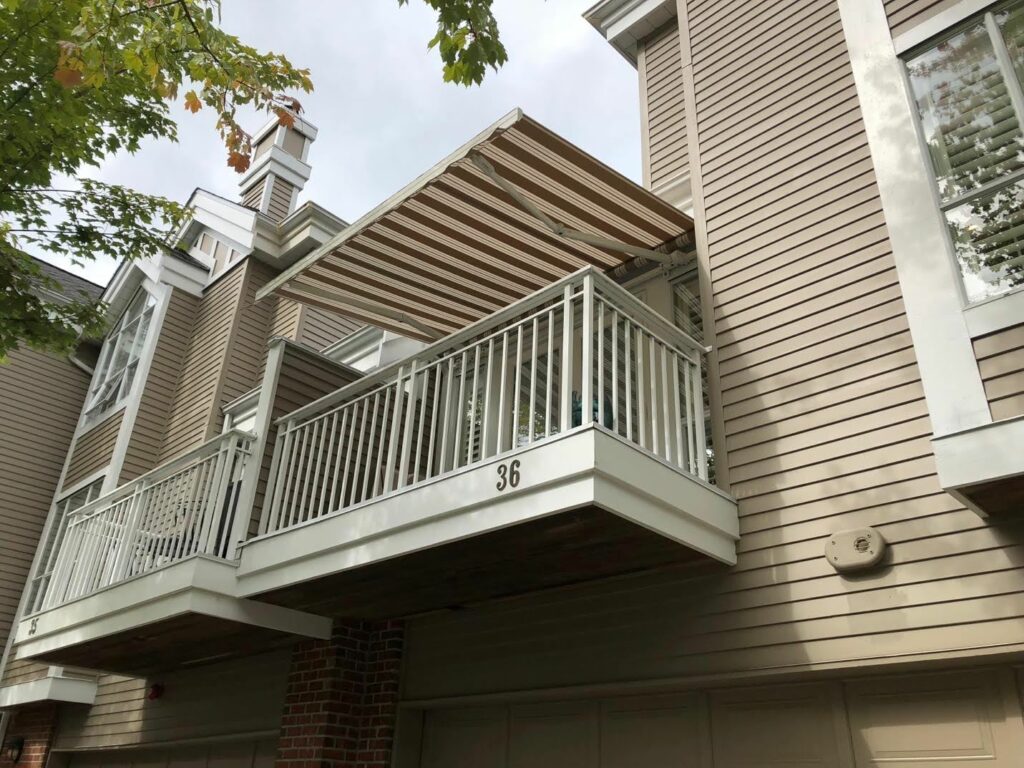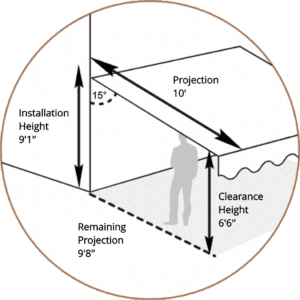Support
- Free Shipping
- Custom-Made for You
- Large Selection of Sizes and Colors
- Acacia Smart Control
- Free Shipping
- Custom-Made for You
- Large Selection of Sizes and Colors
- Acacia Smart Control
Acacia Support
Awning Components
The structure of our awnings always consists of the same basic building blocks.
The awning essentially consists of the following elements:

Installation Planning
Patio Size & Path of the Sun
What use is a shady place at breakfast time, when you’re more concerned about enjoying the evening hours outdoors? When planning your awning, you should consider the path of the sun in the sky because shade will move with the sun. First, determine the main times you will use your patio, and derive the location of your awning from that.
Things to Consider:
- Decide on where you will sit on your patio.
- Consider at what time of day you will use your patio most.
- Check how large your awning will have to be, and where it will have to be installed, to ensure that the selected area will be in the shade.

Mounting Height
Installation Height
Regardless of the awning you decide on: There should be a clearance of at least 6 ½‘ / 2.00 m for people to walk through. Acacia Shades quality awnings are delivered with a pitch of 15 degreed. This can be adjusted up to 35 degrees. You can determine the walk-through clearance of the lowest point, the front bar, from the selected pitch and the depth. In general, a minimum installation height of 8 ½‘ / 260 cm is recommended.
Things to Consider:
- Determine the optimum height at a pitch of 15 degrees.
- Examine the structural possibilities.
-
If you would prefer a larger pitch, make sure that the walk-through clearance is maintained.

Example:
With a 15° inclination and an installation height of 9’1” and with a projection of 10 feet, you get the following results:
– Loss in clearance height 2’7”
– Minimum clearance height 6’6”
– Remaining projection 9’8″
Mounting Types
Determination of the necessary brackets and their attachment
Each awning requires a fixed number of suitable brackets for attachment to the wall, ceiling or soffit. If fewer than necessary are used, safe assembly and operation cannot be guaranteed, and no guarantees or warranties can be given in the event of damage. However, the use of more brackets than specified is not necessary as the properties of the load-bearing components cannot be improved.
Our awnings always include the necessary number needed for wall mounting. If the awning is to be mounted on the ceiling or soffit, the same number of corresponding brackets is required.
If you are not familiar with these different mounting types, please contact us if you like us to support you to find a professional installer.
Wall Mounting
When mounting to a wall, the wall brackets are attached to the wall using our mounting sets. The torsion bar of the awning is then attached to the mounting brackets.
Ceiling & Soffit Mounting
If there is a balcony or soffit overhang above the patio, the awning bracket can also be attached there. The ceiling/soffit brackets are anchored in the balcony floor slab or soffit. The torsion bar of the awning is then attached to the mounting brackets.



